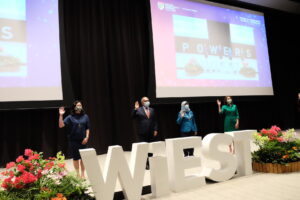
Everyone has got a bad customer experience (CX) at some point, whether this is buying a pair of shoes online or being put on hold on the phone by their bank.
Digital channels, from messaging bots to self service options, are supposed to improve things, but have they? Food delivery providers often do not even have a hotline to call. Even a telecom operator, TPG Telecom, didn’t have one, causing unhappiness among customers last year.
Zendesk, which provides customer service software to many companies in Singapore and abroad, tells Techgoondu that technology alone can’t solve all problems, and it has to be matched with sound management to deliver a good experience.
“Some companies have the technology, but it’s not advanced enough, and others have the channel, but it’s poorly staffed,” said Abhishek Deshmukh, Zendesk’s vice president of engineering and managing director for Singapore, in this month’s Q&A.
“Businesses must strike the right balance between powerful technology and good management to meet and exceed evolving customer expectations,” he added.
NOTE: Responses have been edited for brevity and house style.
Q: In a nutshell, what does a good customer experience entail today in Singapore?
A: Good customer experience (CX) prioritises the customer’s wants and needs, and makes interacting with the organisation easy, seamless, and consistent. This means organisations must have a deep understanding of what motivates their customers, putting them at the heart of everything they do.
Our global Zendesk CX Trends Report 2021 found that since February 2020, Singapore businesses have seen a 255 per cent growth in average weekly ticket volume for self-service solutions, showing that consumers here enjoy the independence and autonomy of finding their own answers.
Another channel that businesses should pay close attention to is messaging, as half of customers in Singapore (50 per cent) indicated a preference for embedded messaging when engaging with businesses. For businesses to meet customers where they are, they must have an ear to the ground to tune into what customers desire. The baseline is this: good CX is not universal, but must be a tailored experience optimised to meet a customer’s needs.
Q: There’s a lot of talk about digital CX, especially with the restrictions on physical contact due to the pandemic. Have you any measurement on how effective Zendesk customers have been in delivering a satisfactory CX to their customers?
A: Success metrics are important for businesses to measure their performance, but there is no one-size-fits-all framework to nailing great CX. Instead, metrics used by different organisations should hinge on their priorities, long-term goals and internal resources, spanning various business units to create a shared focus and strategic overview of the customer journey.
The true value of CX also goes beyond customer satisfaction, diving into the agent experience and the quality of support. A business that understands this is Circles.Life, which has used Zendesk to power their customer service platform since it first entered the market in 2016.
The telco connects with customers across multiple channels on Zendesk’s platform, creating an ongoing conversation, regardless of platform or device. Its agents are trained across channels and products, and onboarding them onto the Zendesk platform takes only one to two days – as a result, the company has a regional CSAT (customer satisfaction) score of 97.5 per cent, and a strong reputation for being a truly customer-centric brand.
Q: As more companies digitalise, do you see many taking the wrong step of saving costs on manpower, for example, but failing to measure how the new digital channels are affecting CX on the whole?
A: Many people think that saving costs and delivering good CX are mutually exclusive, but that isn’t the case. In reality, digitalisation has brought organisations a huge opportunity to tap on smart solutions such as Artificial Intelligence (AI) and automation to effectively and efficiently scale their business.
Our research with (research firm) Ecosystm found 56 per cent of companies in Singapore who indicated an expectation of growth by mid-2021 also considered improving CX as a top business priority. This suggests an understanding that great customer satisfaction can help drive the bottom line.
This is especially true today, where global uncertainties and the exponential shift online has resulted in new and evolving consumer behaviours. Businesses that can respond to customer demands by providing quick and accessible support at the push of a button are the ones that will be the most successful at recovery and growth amid the pandemic.
Q: One common complaint for many consumers today is the lack of a trusted channel to solve their problems – chatbots are often not intelligent enough and the live chat on a website is often not manned or manned by too few operators. Is this a technological or management problem?
A: Some companies have the technology, but it’s not advanced enough, and others have the channel, but it’s poorly staffed. Businesses must strike the right balance between powerful technology and good management to meet and exceed evolving customer expectations.
Chatbots, for example, are perfectly suited to resolve low-touch, high-frequency queries, and are positioned to reduce agent workload. However, when more complex questions are posed, the technology must be able to facilitate the seamless transition to agent interaction through appropriate channels, all within the same customer touchpoint.
As every channel has its limitations, it’s important to equip trained agents with the technological capabilities to oversee the customer journey. One way we manage this is with our new comprehensive messaging tools, which allow consumers and agents to easily toggle between channels while staying on the same ticket.
This messaging history keeps the conversation continuous, convenient and personalised, and is further augmented with specialised CX tools such as AI-enhanced triaging, a comprehensive help centre, and data-driven dashboards. This harmony of technology and management will optimise trusted channels to create the best experiences for customers.






